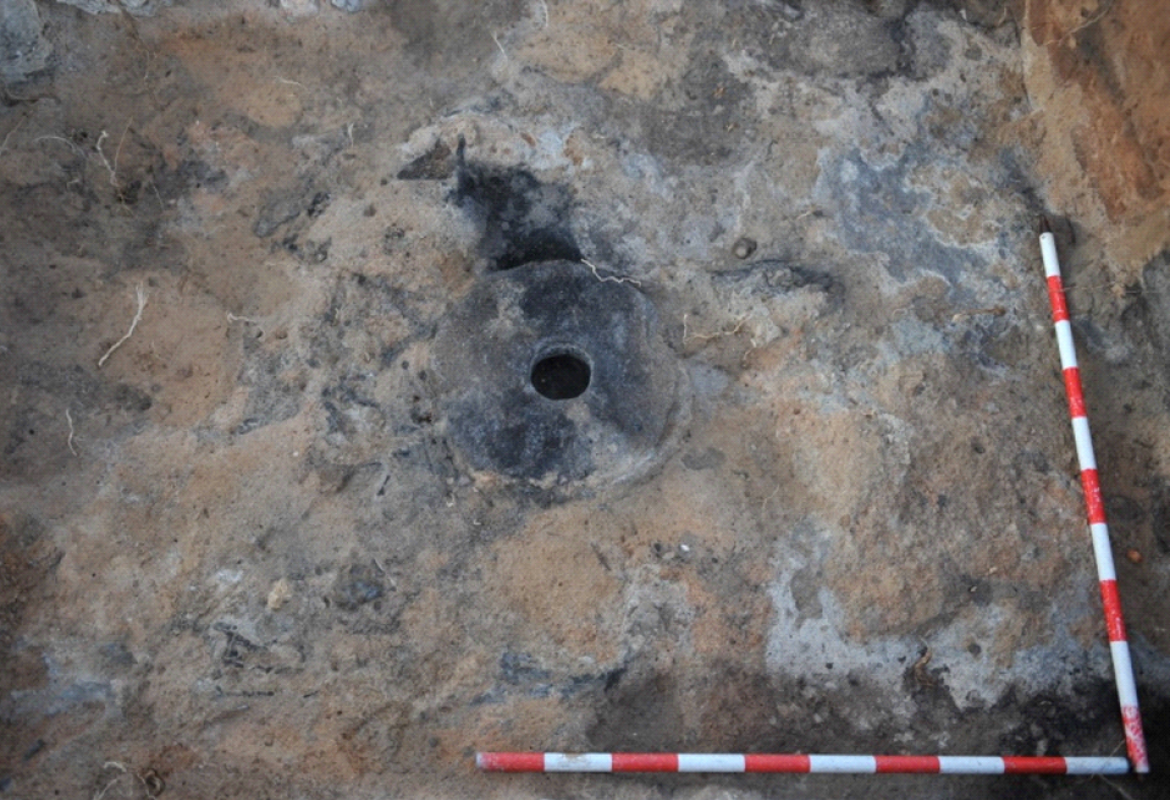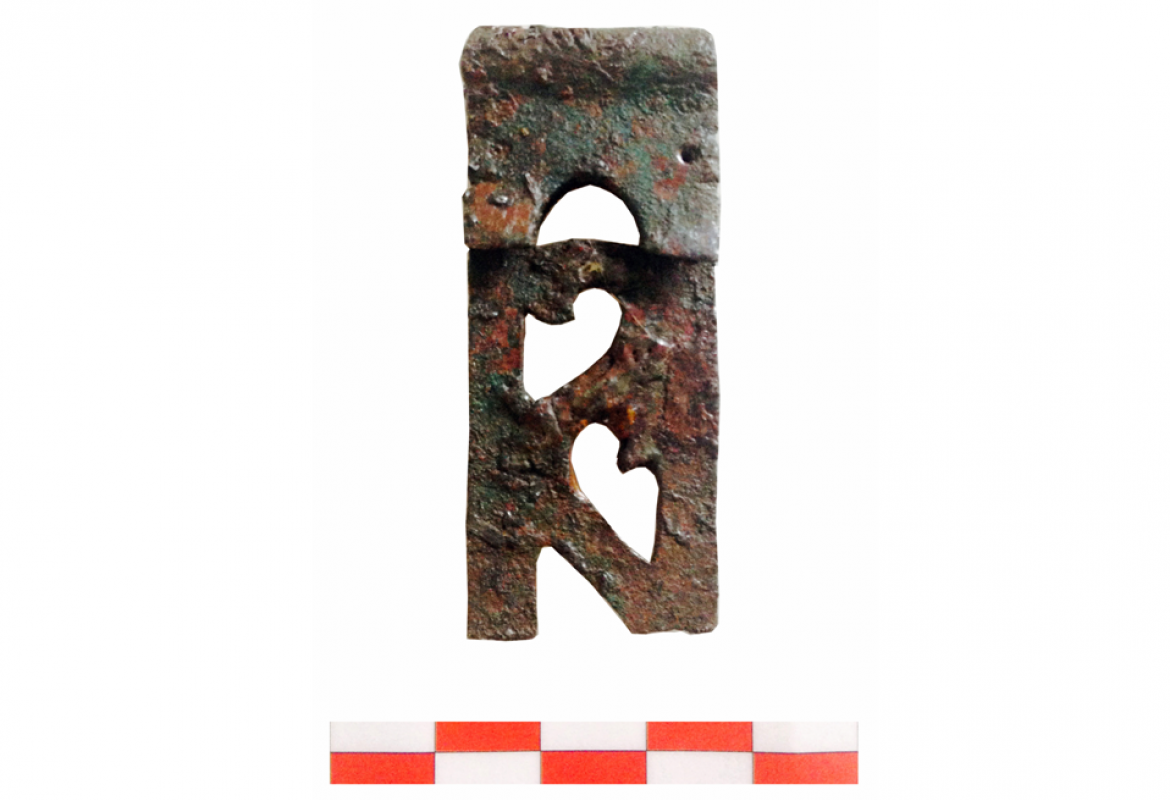
Yacimiento arqueológico de Titulcia
From the Bronze Age to the present
Yacimiento arqueológico de Titulcia
The current municipality of Titulcia is based on a site with a very extensive occupation ranging from the Bronze Age to the present, with the pre-Roman and Roman stages being the most remarkable. The numerous archaeological interventions that have been carried out since the 70 years, and fundamentally during the last decade have allowed not only to characterize this archaeological site but to locate settlement, necropolis, productive areas, cult zones and defensive elements.
The municipality of Titulcia is an area of high historical-archaeological potential. Most of the present urban helmet is on a deposit with a very dilated occupation. Although remains dating back to the Bronze Age have been found, it seems that the first occupants of this space were installed during the Iron Age. It is this stage of the site, along with the Roman, the most significant and studied. However, it should be noted that the occupation of this space continued in medieval times, at which time the current population nucleus seems to have been configured. There are also demonstrations that expand the occupation of the site to modern and contemporary times.
Although the vestiges of the ancient city of Titulcia remained visible until the 50 years, they were not subject to scientific studies until the 70 years, suffering plundering during those two decades. In 1976 there was the discovery of an epigraphic monument on the right bank of the Jarama River, and it is badly called the “Ciempozuelos monument”, since it actually appeared at the top of the Cerrón de Titulcia.
From that moment, several interventions followed, with surveys and prospections, which allowed to define the extension of the site, as well as various elements, such as several necropolises of pre-Roman and Roman chronology, as well as the foundations of the wall of the Roman Acropolis. Complex architectural structures were also excavated with overlapping of two levels of occupation, one of the Second Iron Age and another from Roman times between the end of the Republic and the beginning of the Empire, as well as an industrial zone, an extensive Roman necropolis and more epigraphic elements. .
While the different research groups worked in Titulcia, this complex was declared a zone of archaeological protection (ZOPA) in 1989, and shortly thereafter, in 2012 it was declared a Site of Cultural Interest (BIC).
Image gallery
Archaeological performance
The different archaeological interventions carried out in the municipality of Titulcia since 2007 have been developed within the program of archaeological Visitable Sites Plan of the Community of Madrid. The main purpose has been to know the heritage of the municipality and assess the effects produced in this folder-Roman enclave, to design conservation and protection strategies aimed at its value. Within the framework of this program, a research focused mainly on the archaeological protection zone began.
These works have revealed the presence of a large folder (12 Ha) that is strategically located in a privileged natural environment with sources of water and great economic resources.
This oppidum It has two well differentiated areas. A higher one, known as El Cerrón, where the settlement acropolis was established, and the other, a platform located a few meters below. In the latter area, the remains of several rooms that seem to form a productive center have been documented, with an oven being located, grinding areas, a large accumulation of cereals, work surfaces with tools and large containers and barrels.
In another of the excavated areas, a more complex and distinguished residential area than the previous one was documented, interpreted as a possible sanctuary. In this area, an exceptional piece was found, a phiàlae of silver and gold. In one of the rooms were also found many objects of bronze and iron with fragments of burnt wood that seem to belong to one or more elements, such as decorative plates of a possible piece of furniture.
Structures that can be related to a fortification system, a possible pit excavated in the geological terrain and remains of a possible wall of earth wall have also been documented.
The necropolis associated with the settlement was found by chance and an incineration was documented on a small promontory that rises over the Tajuña and the entrance to the municipality. It is a complete globular urn that inside contained the remains of the cremation of an individual.
The abandonment of the Carpetan settlement occurred before contact with the Roman world. Thanks to carbon 14 analysis, it has been found that it occurred in the middle of the XNUMXnd century BC. The excavation of the levels at that time shows an abandonment of tools, objects of personal adornment, animals, large containers and large amounts of grain.
The Roman presence in Titulcia has been verified mainly from the actions carried out in recent years. In the western sector of the urban nucleus ceramic fragments are located that date from the last republican moment until the Augustan age. Other materials dating from the change of era and early years of the Empire have also appeared.
Among the large quantity of ceramic fragments, a considerable number appears that evidences the presence of a testar. Some fragments of cooking debris indicate that this potter's kiln was in operation at least since the second half of the XNUMXst century AD. It should be noted that the pottery complexes were never inside the cities in Roman times, so this complex could be marking the western limit of the city.
On the other hand, thanks to oral interviews, it has been possible to identify the original location of the Titulcia epigraphic monument (Honorific Arch of Titulcia) on top of El Cerrón, confirming that its original location would coincide with the location of the Iberian-era acropolis.
With regard to the Roman necropolis, several grave burials were excavated that date from the second half of the first century AD. The same necropolis seems to occupy an area of approximately 2 Ha in the western area of what is now Titulcia.
In short, the different works developed in Titulcia have brought to light exceptional archaeological remains that allow defining the true characterization and meaning of the ancient Titulcia. Both the finding of oppidum, which constitutes, without a doubt, one of the most significant deposits of the Carpetania Pre-Roman, as well as the new data that have been known from the Roman epoch of the site -the original location of the honorific arch, the east and west limits of the city and the location of the necropolis- help to reveal the origin of this city and to reconstruct its true history.
Archives
 Titulcia (4.09 MB)
Titulcia (4.09 MB)












